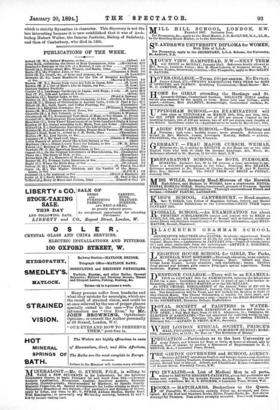Vetusta Monumenta : Tomb of Archbishop Hubert at Canterbury. By
W. H. St. John Hope. (Nichols and Son.)—This latest issue of the Appendage to the " Archmologia„" the publication of the Society of Antiquaries, is probably the best thing of its kind ever done. The research (or curiosity) of the custodians of our great national monuments in these days leaves no stone unturned in its endeavour to satisfy itself,—least of all, no tombstone. And so the authorities at Canterbury, emulating the sepulchral exploits of the late Dean Stanley, opened the tomb, hitherto unidentified, which forms the subject of this memoir. Inside was found the body of an Archbishop in full pontificals, with crozier under the left arm, and chalice (in which were remains of the wine) and patten on his right side. Of the silk vestments a large part re- mained; those of other materials had almost entirely disappeared. Mr. Hope has given the most marvellous reproductions of the vestments. That of a piece of the chasuble especially is so ex- quisitely done, that you have to touch the paper to assure yourself that it is not the real thing. Perhaps the most interesting of the articles found are the sandals and buskins of silk, originally green, embroidered all over with gold and silver thread, and the sandals adorned with carbuncles. The only other examples known in England were those of Wayneflete at Magdalen College, Oxford, some three hundred years later. It is a curious thing that the ornamentation of the buskins, from being leas sacred, shows a much more Gothic tone of ornament than the stole, which is mostly key-pattern, and the apparel of the =ice,
which is strictly Byzantine in character. This discovery is not the less interesting because it is now established that it was of Arch- bishop Hubert Walter, the famous Justiciar, Bishop of Salisbury, and then of Canterbury, who died in 1205.



































 Previous page
Previous page